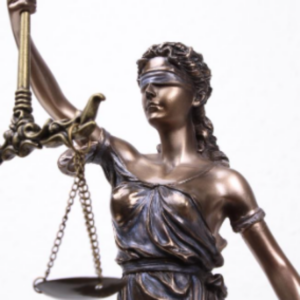“Rats and roaches live by competition under the law of supply and demand; it is the privilege of human beings to live under the laws of justice and mercy.” ~ Wendell Berry
Wendell Berry is an icon in the sustainability movement. He is a Kentucky farmer, poet, essayist, novelist, and activist. The Berry Center advocates for small farmers, land-conserving communities, and healthy regional economies. “The Berry Center is building equitable and ecological farming futures based on affection – for creatures, for people, place, and for the planet.”
Wendell Berry’s ethic also applies to fourth-generation cattleman Will Harris of White Oak Pastures in Bluffton, Georgia. Will “has been recognized all over the world as a leader in humane animal husbandry and environmental sustainability.”
These gentlemen exemplify what living aligned with the laws of justice and mercy looks like, expressing affection for creatures, people, place, and the planet. They make life better for everyone and everything around them, acting from their values, a foundation of morality, and the ethics of justice and mercy.
Justice and mercy. What do these terms mean to a sustainability practitioner?
Regarding justice, one need only look at the Stanford Encyclopedia of Philosophy to realize that philosophically, it is a complex and complicated, headache-inducing concept. To this sustainability practitioner, specific aspects of justice stand out.
From the website Simplicable: “Justice is fairness of a society to the individual. This can apply to the fundamental structures, systems, institutions, and practices of a society with far reaching implications. Justice is likely to produce social stability, high quality of life, and a thriving society. Likewise injustice may cause social instability, low quality of life, and decline.”
At its essence, justice is a positive virtue. It has to do with what we owe each other, and how we treat each other. It is an important enough concept that every religious tradition I know of has some version of ‘treat others the way you want to be treated,’ most known among Christians as the Golden Rule.
In Western cultures, we tend to think about what we owe each other as it relates to human beings. Indigenous cultures, with a more intimate relationship to the natural world (and enlightened Westerners like Berry and Harris), tend to see “others” as including plants, animals, and inanimate aspects of creation, like waters and mountains, recognizing all as fellow travelers on Spaceship Earth, all having identities and rights.

Photo credit: theancienthome.com
Justice also relates to how different groups are treated. When people are treated differently (to their advantage or disadvantage) due to skin color, culture, religion, economic status, and so on, that is defined as unjust in a democracy. Laws are to be applied impartially, treating each one the same. Statues of Lady Justice depict her as blindfolded, representing impartiality and objectivity in applying the law.
Recall the United States Declaration of Independence: “We hold these truths to be self-evident, that all men are created equal, that they are endowed by their Creator with certain unalienable Rights, that among these are Life, Liberty and the pursuit of Happiness.”
Mercy, like justice, is reflected in the Golden Rule. Christianity, Hinduism, Judaism, and Islam all teach divine mercy and call on humanity to live a merciful life in faithfulness to a divine calling.
Synonyms for mercy include quite a list of admirable qualities. From the Cambridge University Press, a partial list includes: compassion; kindness; forbearance; benevolence; clemency; humaneness; humanity; tolerance; charity; grace; forgiveness; leniency.
It’s interesting to note a few antonyms as well: cruelty; harshness; severity; inhumanity; brutality.
From the perspective of this sustainability practitioner, mercy comes down to humane treatment shown to offenders over which someone has authority and compassionate acts toward the unfortunate, those suffering and in need, human and non-human alike.
It must be said that justice and mercy require accountability and consequences for the unjust and the unmerciful. Cruelty, inhumanity, and brutality must be confronted, opposed, and eliminated to the extent possible. That is why laws and rules of behavior in society are established.
Imagine a society that lived by the universal human values of justice and mercy, toward other human beings, all life on Earth, and the planet itself. I recall the words of sustainability pioneer Donella Meadows: “The future cannot be predicted, but it can be envisioned and brought lovingly into being.”
The virtues of justice and mercy are personal, individual, and collective. They reflect deep caring and yearning, closely held feelings of kindness, compassion, and fairness; a recognition that we are all in this together, that the only sustainable path forward requires a commitment to community, ensuring that all are cared for and able to live a safe and respectable life.
In this time of anger, resentment, and cruelty, we are called to tap the depth of sentiment found in this beautiful song by Grammy-nominated American folk singer-songwriter Mary Gauthier, titled Mercy Now. The song ends with this repeating line: “Every single one of us could use some mercy now.”




